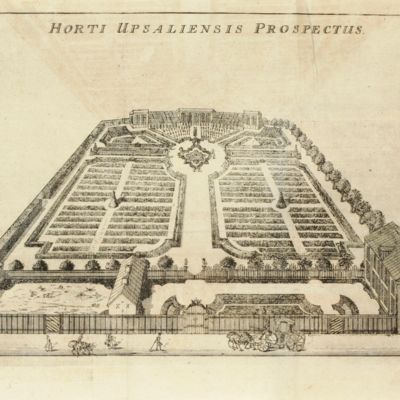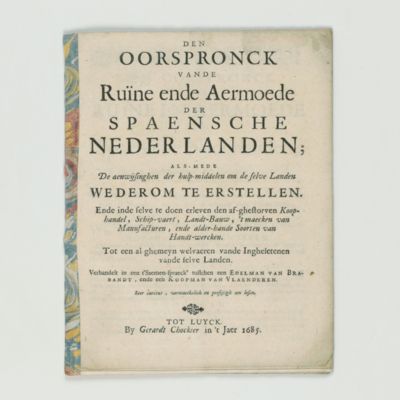Linnaeus, C. [Nauclér, S.]
Hortus Upsaliensis, quem cum consensu ampliss. facult. medicae in regio ad salam lyceo, sub praesidio viri celeberrimi, d:ni doct. Caroli Linnaei, med. et botan. profess. reg. et ord. acad. imper. Regg. Monspel. Stoch. et Upsal. socio hujusque secretario. Speciminis academicvi loco, publicae disquisitioni subjicit Samuel Naucler.
Upsaliae [Uppsala], [the author], 1745. Small 4to (17.7 x 14.1 cm). [iii], 48 pp.; folded view, folded map, and two engraved plates. Early 19th-century half vellum over marbled boards. Edges speckled red.
A description of the botanical gardens in Uppsala, Sweden, written by the great 18th-century naturalist and founder of modern taxonomy and nomenclature, Carolus Linnaeus (1707-1778), with fine illustrations. As usual, this work was presented as a thesis and defended by one of Linnaeus's pupils, Samuel Nauclér (1724-1770). It was in this work (on p. 23) that the centigrade or Celsius thermometer was presented for the first time in its current form, with a freezing point at 0° and a boiling point at 100°, instead of the other way around, as initially - and less logically - proposed by the Swedish astronomer Anders Celsius (1701-1744). Some credit this scale to the French physicist, mathematician, astronomer, Jean-Pierre Christin (1683-1755), but Christin did not publish about this. PMM errs in crediting Celsius himself for putting the boiling point at 100° and the freezing point at 0°. Today, this scale in this form is almost universally adopted, except for six countries that still use Fahrenheit, namely the USA, Liberia, Antigua and Barbuda, St. Kitts and Nevis, Palau, and the Federated States of Micronesia. Nauclér became the first provincial doctor of the county of Västra Götaland, being stationed in Uddevalla between 1759 and 1767. In addition to a description of the gardens and its history this work contains a list of all plants present, including, e.g., several cacti, definitions of climate zones, and a chronological listing of European botanical gardens. Provenance: armorial bookplate of the Swedish farmer, writer, and politician Carl [Johan] Trolle Bonde (1843-1912), engraved by the Swedish artist and engraver Robert Ludvig Haglund (1844-1930), mounted on the front pastedown, next to an old inscription, F. Wulff, dated 1894 (possibly the Swedish novelist and professor of phonology and linguistics, Fredrik Amadeus Wulff [1845-1930]), and a small, round stamp of an antiquarian, C. Nilsson, in Lund. On the front board a small label with handwritten title and engraved initials CTB (i.e., Carl Trolle Bonde). A few marginalia in light pencil, otherwise clean, excellent. Very rare. PMM, p. 109; Soulsby, 1424; Stafleu & Cowan, 4733.





